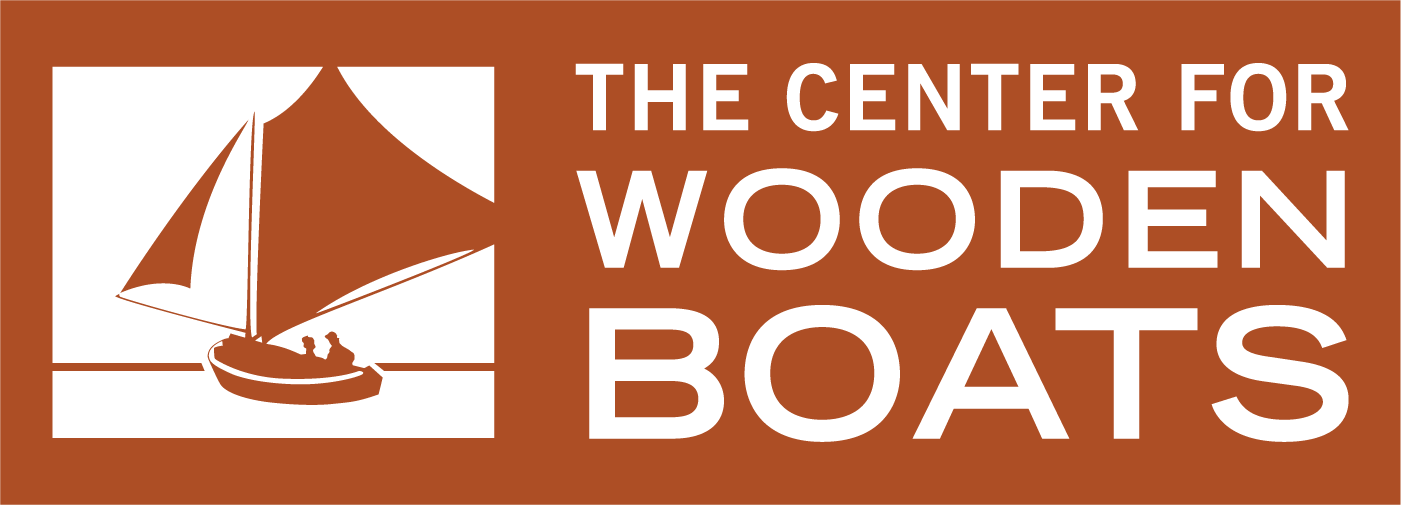Bristol Bay Gillnetter
Builder’s stamp located on coaming by mast.
Rig has no hardware and can be easily dismantled and tied to the mast to clear working space.
Generous freeboard, floats very high empty, designed to sail best when loaded.
2009.20.1
Builder/Location: George Kneass, San Francisco, CA Date: 1932
Length: 28’ Beam: 8’8”
Rig: Sprit, sprit boom
Shape: Bottom, Round/Double ended Construction: Frame, bent/Carvel/Centerboard
Material: Port Orford cedar, oak, canvas, spruce
Rib dimensions/spacing: 1 3/4” X 1 3/8”, 9-11” centers, tapering in the mold dimension 1/4”-3/8” from keel to sheer. 9-11” centers.
CWB’s flagship Admirable is a sailing gillnetter built by George Kneass in San Francisco for the Alaska Packers Association, a cannery on Bristol Bay in Alaska. These fishing cat boats were operated on Bristol Bay right up into the 1950s, thanks to a state law which banned the use of motors in the fishery until 1951. Canneries would hire fishermen to operate the boats, which could catch and hold as much as 2500 fish in a day. Once loaded, a boat would deliver its fish to a lighter, a scow brought out by a tug.
The basic gillnetter form evolved for the Sacramento River salmon fishery in 1869, when the first cannery on the West Coast was built at the mouth of the River. That earliest design is often credited to J.J. Griffin of San Francisco. Fishing moved north as the fisheries were depleted, first on the Sac- ramento and then the Columbia Rivers, followed by Puget Sound and finally the Fraser River and Bristol Bay in Alaska. The Gillnetter boats followed, and the basic design evolved for the unique needs of different fisheries. These are wide double-ended centerboard catboats designed for rowing or sailing and proportioned to sail best when loaded. They are nearly plumb in the stem and the stern post with flare above the waterline, and short decks in the bow and stern. Most were sprit-rigged on an unstayed mast which could easily be struck, or got out of the way by lashing the boom and sprit upright to the mast. Because the rig was unstayed, the sails were long on the foot and short on the Bristol Bay Gillnetter “Admirable” hoist to maximize sail area without overstressing the mast. The Bristol Bay type has flatter bilges and is generally larger than the Columbia River type from which it evolved. These boats sailed in more open waters, and also need to stay upright on the muddy shore after the tide went out. Most Bristol Bay boats were built in Puget sound and the northwest, though this one was built by George Kneass in San Francisco.
Admirable is built of Port Orford cedar planking over white oak frames, keel, stem, and stern post. She was extensively restored at CWB in 1999, including extensive plank replacement done with yellow cedar. The boat has also been fitted with seats to accommodate passengers.






